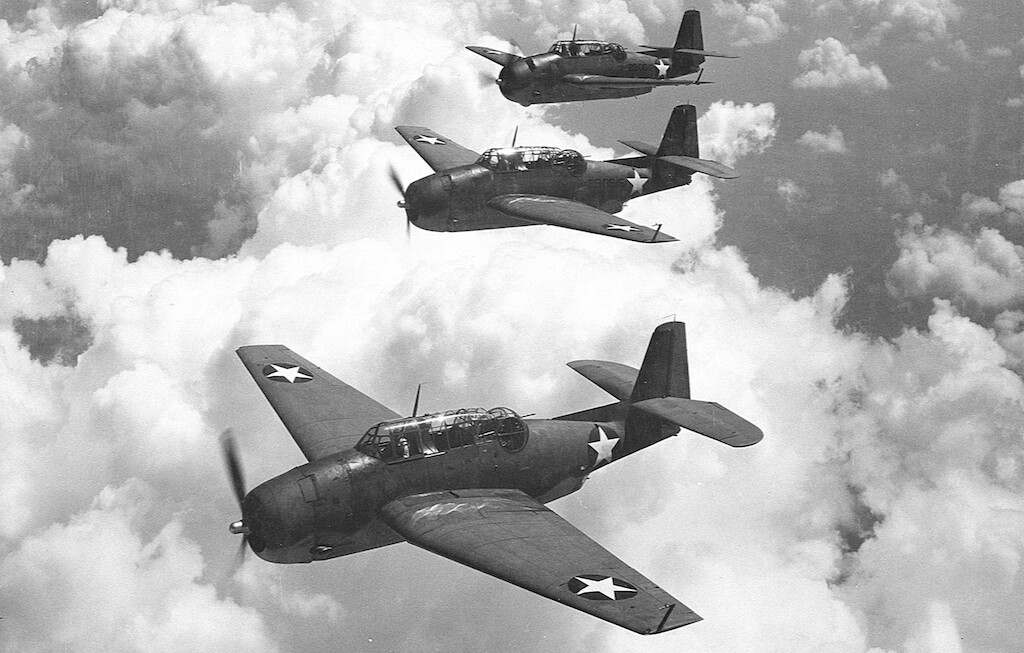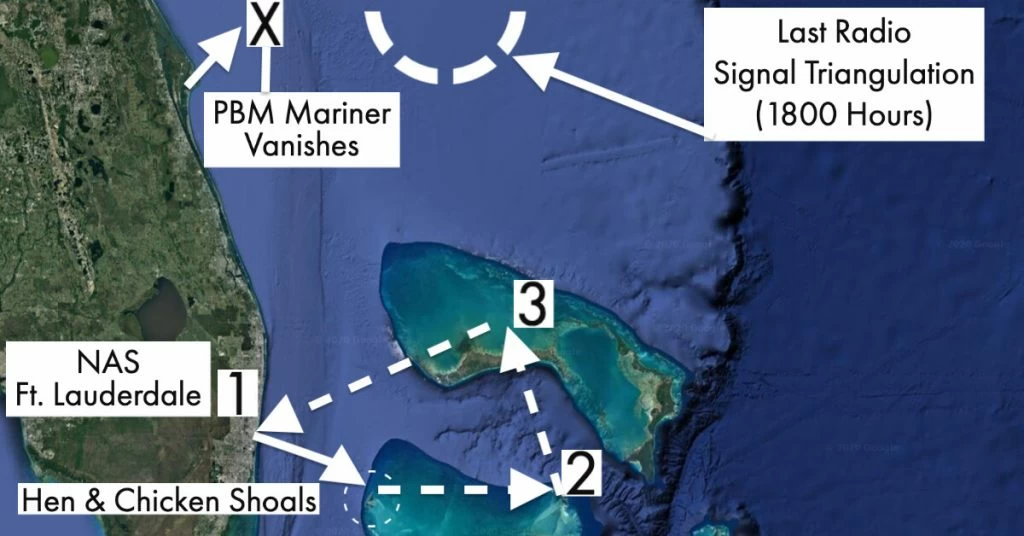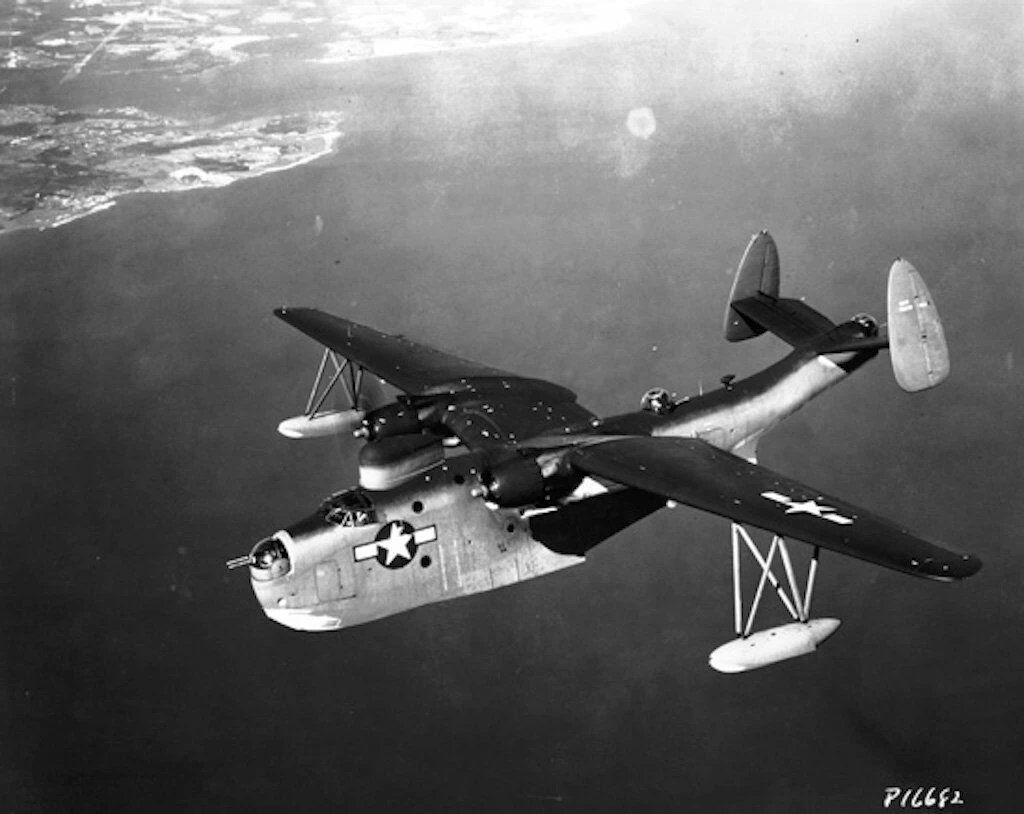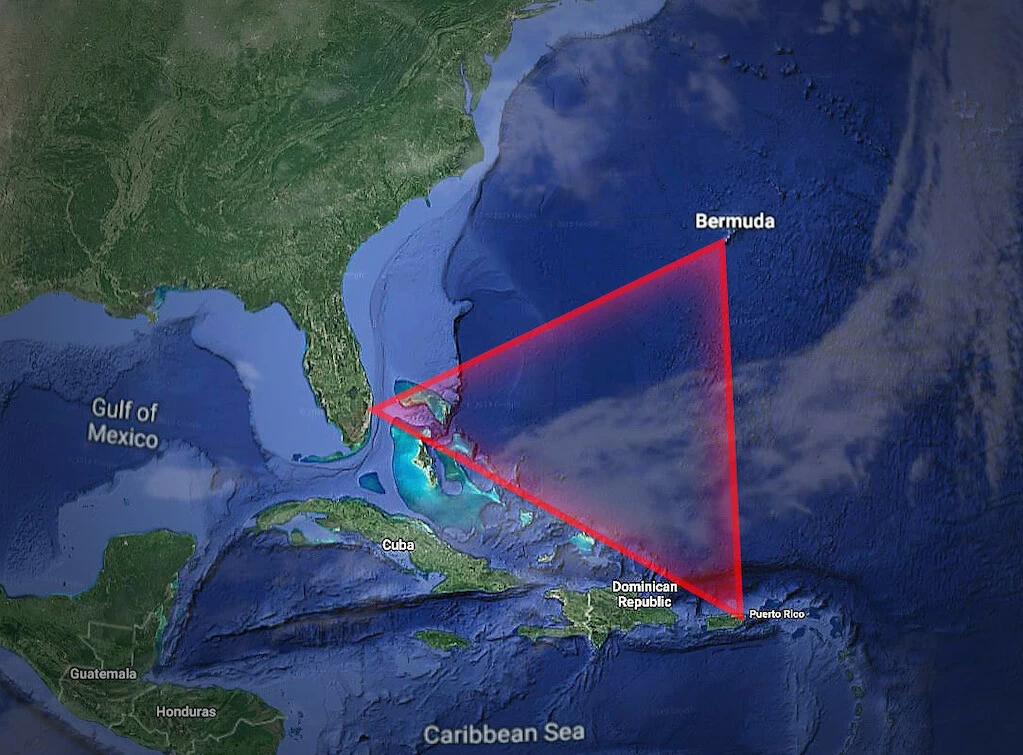Flight 19 was a group of aircraft that mysteriously went missing off the coast of Florida in 1945. On December 5th, shortly after 2 PM, five General Motors TBF Avenger torpedo bombers and all fourteen men aboard disappeared during a training mission over the Atlantic Ocean. Their unexplained vanishing and proximity to the fabled Bermuda Triangle has led to multiple theories as to their ultimate fate.

Flight 19 Mission
World War II was the first war that involved extensive air combat. Thousands of new planes had to be built, and thousands of pilots needed the training to fly them. Flying heavier-than-air aircraft is an inherently dangerous activity. Future generations of combat pilots would learn from the first generation’s sacrifices.
Fatal accidents were common. Pilots were nearly as likely to die in training as they were in combat. In Britain, over 8,000 pilots died in training. In America, it was over 13,000. Any combination of mechanical failure, bad weather, and human error could doom any pilot, no matter how experienced.
When the mission started on the afternoon of December 5th, 1945, about seven months after the war ended, it was supposed to be a routine training exercise. But in reality, there was no such thing.

The plan was to take off from Naval Air Station Fort Lauderdale and fly in a triangular pattern. It was supposed to be a practice navigation exercise and bombing run. They would start by flying east, drop their bombs at the Hen and Chickens Shoals, and continue for a total of 140 nautical miles. At that point, they would turn left and fly 73 nautical miles north to an area near the Bahamas. Finally, they would turn left and fly another 140 nautical miles back to NAS Ft. Lauderdale.
All bombers had crews of three Navy or Marine pilots, except for one which had two crew members. The flight leader was LT Charles C. Taylor, a veteran combat pilot who had flown missions in the Pacific Theater. Nearly every member of the mission had logged over 200 hours of flying experience. All of them understood the risks.
2:10 PM – 3:40 PM
Flight 19 took off around 2:10 and proceeded to Hen and Chickens Shoals, where they dropped their practice bombs without incident. But then, somewhere over the Atlantic, they ran into bad weather. Meteorologists tracked a massive storm traveling from Georgia south to Miami that day, generating hurricane-force winds at 8,000 ft.
Flight instructor LT Robert F. Cox was on another flight in the area and overheard many of Flight 19’s final radio transmissions. At some point, the storm disoriented the aircraft, and they became lost. At 3:40, LT Taylor radioed in a distress call, reporting a malfunctioning compass and they lost their way.
I am sure I’m in the Keys, but I don’t know how far down and I don’t know how to get to Fort Lauderdale.
LT Taylor
LT Taylor was mistaken about being in the Florida Keys. Instead, they were over 200 miles north. Some have speculated that Taylor, who recently transferred to Florida, may have been unfamiliar with the geography.
You May Also Like: Five Aerial Disappearances Shrouded in Mystery
In this time, when American pilots flying over the Atlantic became lost, the protocol was to turn their plane west towards the setting sun and fly until they eventually reached land. The problem was, LT Taylor had become so disoriented that he believed he was at the mouth of the Gulf of Mexico. Flying west, Taylor thought, would have put them further over the Gulf. Instead of turning left and flying west back to Ft. Lauderdale, LT Taylor ordered his men to continue flying east, putting them further out over the open ocean. Their last known location was 75 miles off the coast of Cocoa, Florida.
6:00 PM
LT Cox overheard the men arguing with each other about which direction to go. Around 6:00 PM, LT Taylor’s men persuaded him to finally turn around and head west. Shortly later, he reversed course and resumed heading east. Investigators later speculated that one of the planes in Flight 19 might have broken off and flown in another direction, but most followed their commander’s orders.
As the sun began to set, LT Taylor ordered his men to begin preparing for a water landing. “All planes close up tight,” LT Taylor said:
We’ll have to ditch unless landfall…when the first plane drops below ten gallons, we all go down together.
After several minutes of silence, Lt. Taylor frantically radioed in.
We can’t tell where we are… everything is… can’t make out anything. We think we may be about 225 miles northeast of base…It looks like we are entering white water… We’re completely lost.
LT Charles C. Taylor
This was their final radio transmission.
Search & Rescue
LT Cox wanted to search for the planes, but he received orders to return to base. Shortly after Lt. Taylor’s final transmission, around 7:30 PM, NAS Ft Lauderdale scrambled two PBM Mariner “flying boat” rescue planes to search for the missing bombers.

The PBM Mariner had a reputation of being notoriously accident-prone. The airmen nicknamed it the “flying gas tank” for its tendency to explode. Almost immediately, one of the PBM Mariner vanished, along with its 13 crew members.
The next day, the U.S. Navy, Coast Guard, and naval aviation personnel sent over 300 planes and boats on a search and rescue mission. They scoured an area of around 250,000 square miles but found no sign of the missing airmen. Not even an oil slick.
Including the PBM Mariner crew, 27 men lost their lives.
Investigation
A committee investigation followed, and months later, the Navy published a 500-page report of its findings. The committee established many of Flight 19’s true locations vs. where LT Taylor believe them to be. Most likely, Taylor mistook the Bahamas for the Florida Keys, which are much further south. Ironically, the aircraft’s actual location was much closer to where it was supposed to be than where Taylor believed.
Initially, investigators attributed the accident to mechanical failure caused by the malfunctioning compass. Even though Taylor wasn’t found at fault, his mother later successfully petitioned the cause to be changed to “unknown,” since the Navy hadn’t recovered any wreckage or bodies.
Alternate Theories
The disappearance of Flight 19 was considered a somewhat mysterious tragedy until 1964. Author Vincent Gaddis published an article about the doomed flight in the sci-fi magazine Argosy.

In the article, Gaddis argued the plane disappeared in a region with an unusually high number of air and water accidents. Gaddis coined the term “Bermuda Triangle.” Even though that region of the ocean is no more dangerous than anywhere else globally, the theory inspired generations of conspiracy theorists. (And generations of skeptics).
Related: USS CYCLOPS Disappearance in the Bermuda Triangle
Over the years, people have speculated the disappearance was caused by anything from interference from the Earth’s magnetic fields, to parallel dimensions, to alien abductions. The 1977 film Close Encounters of the Third Kind even depicted a flying saucer abducting the planes and crew and teleporting them to the Mexican desert.
Aficionados have also continued the search for the aircraft. In 1990, John Myhre believed he discovered one of the planes on the ocean floor, 390 ft. below the surface. A year later, Graham Hawkes claimed to have found all five aircraft. Both were mistaken. While they did find World War II-era bombers, they were unrelated to the disappearance of Flight 19. And considering how dangerous aviation was during this period, 1940’s plane wreckage off Florida’s coast isn’t surprising.
Aircraft and Personnel Identifiers
The following table provides details on the aircraft and personnel lost.
[wpsm_comparison_table id=”1″ class=””]